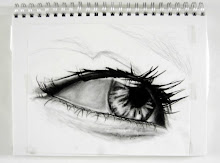
Edward Poitras’ mixed-media installation entitled "Progress" from 1991 is an excellent example of how art can be multidisciplinary in both medium and meaning. It places a sculptural coyote, comprised of coyote bones, amongst the neoclassical façade of a government building in Saskatchewan. Below it sits crumbled broken busts of Vladimir Lenin. On the tympanum is a relief sculpture picturing Britannia (the physically female representation of the state of Britain, modeled after the classical personification of Rome called Roma) as a peaceful bridge between the white, European settlers and the indigenous population who inhabited the land before they arrived. In the original relief, Britannia holds out her hand in offering to the native who is dressed in clichéd garb. The scene is one of peaceful unity, but is unfortunately erroneous. Britannia’s position as the primary figure alludes to Britain’s supremacy in Canada. The “Indian" is rendered as an “Other”, he has, as is common within colonialist imagery been Orientalized, as Edward Said notes, Orientalism is a discourse ‘by which European culture was able to manage –and even produce- the orient politically…ideologically, imaginatively.”[1]
[Photo of Poitras' installation to come]
By placing these objects together Poitras makes a politically charged statement concerning the mistreatment of Natives throughout the history and development of the nation of Canada. The inclusion of the coyote as a trickster figure serves as an elaborately ironic pun, which undermines the harmonious symbolism of the tympanum above it. The coyote acts, in true trickster fashion, as a vehicle to challenge conservative ideas, and to promote new ways of thinking about roles and relationships in society. In this way it represents what Vizenor calls a “comic holotrope”.[2] It purposefully “intervene[s] in the semiotic realm – a realm where cultural signifiers and politicized discursive structures produce meaning and coherent stories… thus exemplifies a ‘semiotic trickster’”.[3] Here, the trickster is multi-vocal, serving both as a visually ironic pun, and political statement. This political statement is reiterated and made clear in two elements of the assemblage’s design. Both the strings that hold up the façade and the broken busts of Lenin allude to the instability of state. Because the heavy stone tympanum sits atop the fragile string columns it indicates Poitras’ wish for nation of Canada to collapse, to suffer the same fate as the Soviet Union, which is symbolically represented in the broken busts of Lenin. The role of the trickster in Poitras’ installation is evocative of the traditional trickster cycle type, as Barbara Babcock explains in “A Tolerated Margin of Mess: The Trickster and his Tales Reconsidered” the Trickster’s conduct, although most often results in failure, may also result in a beneficial way, as in when he introduced fire to the native peoples.[4] Here, through the use of the trickster figure along with these compiled objects Poitras attempts to regain power and control for his People by founding his own brand of Manifest Destiny and thus re-establishing an independently strong cultural identity. (ki)
Other Examples:
Joni Mitchell's "Coyote" Performed at The Band's Last Waltz concert (1976).
[1] Edward Said. Orientalism. (New York: Vintage Books, 1979),260.
[2] Vizenor, Gerald. Narrative Chance: Post-Modern Discourse on Native American Indian Literatures. Albuquerque: University of California Press, 10
[3] Smith, Carlton. “Coyote, Contingency, and community: Thomas King's Green Grass, Running Water and postmodern trickster." American Indian Quarterly 21.3 (1997): 515-535.
[4] Babcock-Abrahams, Barbara. "A Tolerated Margin of Mess: The Trickster and his Tales Reconsidered." Journal of the Folklore Institute 11.3 (1975): 147-186






No comments:
Post a Comment